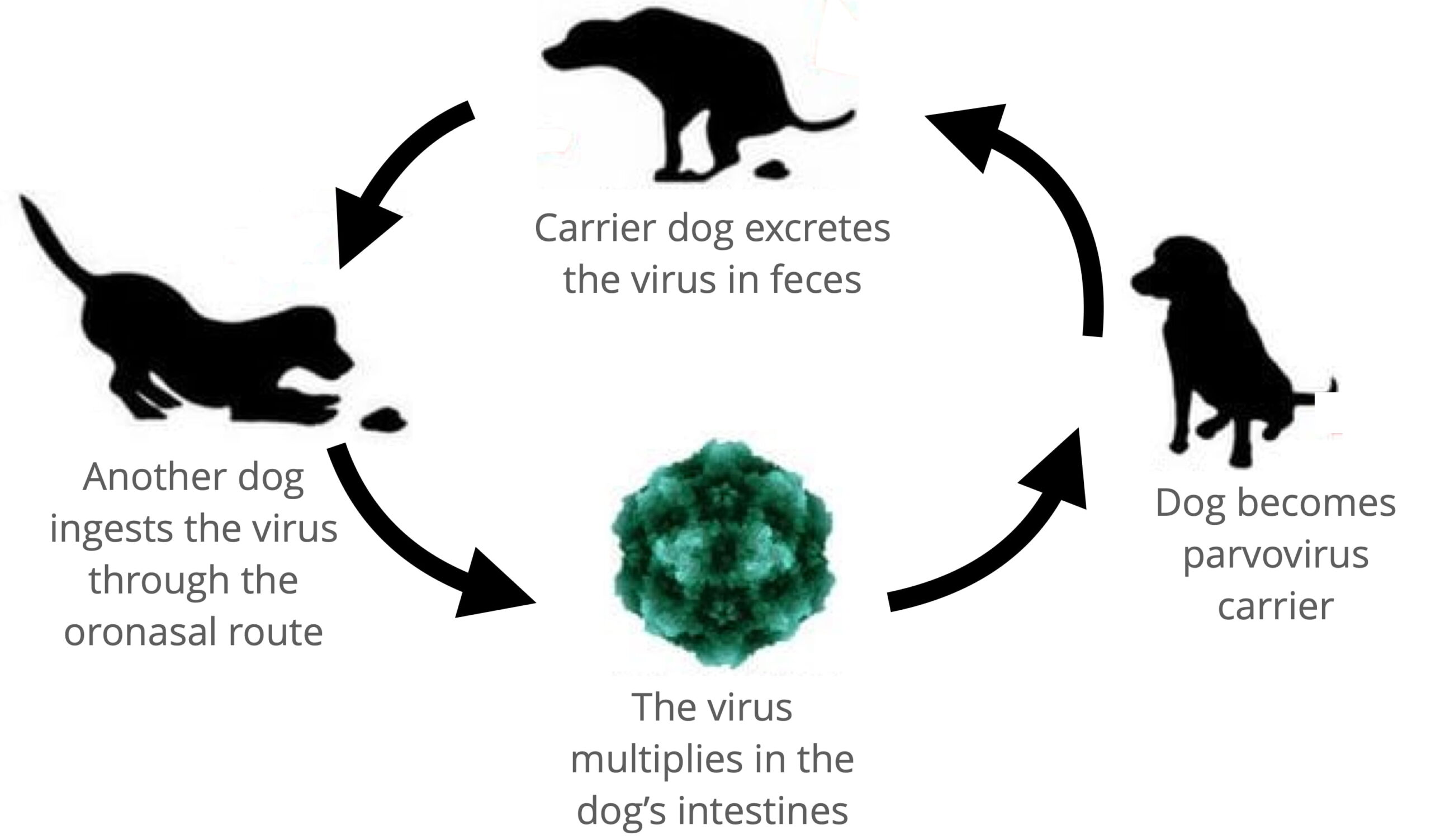Parvovirus was first discovered in dogs in 1978 when it cause a global pandemic in months. The virus is now well established worldwide and is probably the single most common infectious disease in dogs that can be fatal. The virus has a fecal-oral transmission but fomite (an inanimate object that becomes contaminated with the virus) can also cause infection. Infected dogs pass large amounts of the virus in their feces. There is some research that has shown that some breeds of dogs are
more susceptible to infection, with Rottweilers, American Pit Bull Terriers, Doberman Pinschers, English Springer Spaniels, and German Shepherds being at increased risks. Immunity can be passed from mother dogs to her puppies but the protection is short lived waning at about 12-14 weeks of age. Parvovirus is extremely stable in the environment which makes indirect transmission and environmental decontamination difficult.
The Canine Parvovirus Lifecycle

Signs of Parvovirus Infection
The virus relies on normal cell division to spread through the body so it prefers cells of the thymus, bone marrow, spleen, and gut. Following ingestion the virus goes to the regional lymph nodes and the incubation time can rage from 4 days up to 1-2 weeks. Early signs include fever, depression and a decrease in appetite. This is followed by diarrhea and vomiting. The diarrhea may quickly become hemorrhagic. The vomiting increases in frequency and can become very severe quickly.
Infected dogs are also very susceptible to secondary infections at this time. The most common is a bacterial infection in the blood stream.
Treatment
As this is a virus treatment is based on offering supportive care, preventing secondary bacterial infections and supportive the affected organ systems
until the body can recover. This includes specialized fluids that are administered in the hospital. All of the fluids have electrolytes but some also have additional components depending on the severity of the infection. In addition to fluids antibiotics and antiemetics (medication to stop vomiting) are given. The level of care offered strongly affects the outcome. Additional treatment includes pain medication, nutritional support (a tube passed through the nose and into the esophagus can be used to feed affected puppies).
Prognosis/ Prevention
Outcomes vary from 10% survival in untreated puppies to 90% in puppies who receive intensive care, and this is very much a function of what owners can afford.
Vaccines are the cornerstone of protection. These vaccines are widely available and are part of core vaccines in both dogs and cats. These vaccines are safe and very effective.



